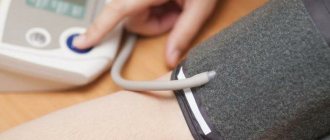A heart attack occurs when the blood supply to the heart is suddenly blocked by a blood clot. Many people recover fully from a heart attack, but there is a serious risk that the heart may stop beating - cardiac arrest. It is very important to provide prompt first aid in case of a heart attack. People with angina are more likely to have a heart attack. It occurs when the arteries leading to the heart narrow and the heart muscle cannot receive enough blood. It can occur not only during physical activity, but also during a period of rest (a more dangerous condition). Heart pain is usually a sharp pain in the chest, which may improve if you immediately calm down and take angina medicine. It may only last a few minutes. If the pain lasts longer, a heart attack develops.
What is a heart attack?
A heart attack is commonly referred to as a myocardial infarction.
This condition develops when blood flow in the vessels supplying the heart muscle is impaired. For example, due to a sharp spasm or blockage of blood vessels with a blood clot or accumulation of cholesterol. From a lack of oxygen, a section of the heart muscle begins to die. This causes chest pain and cardiac dysfunction. Myths about heart disease
Heart disease is the leading cause of death worldwide. However, myths about cardiovascular disease persist. Test your own knowledge.
Who is having seizures?
The risk of a heart attack increases during periods of unstable disease, in the off-season, and at high atmospheric pressure. Statistics show that the most susceptible to attacks are:
- middle-aged men (40-60 years old);
- having excess weight;
- people who do not want to give up smoking and alcohol;
- “experienced” hypertensive patients;
- persons suffering from coronary heart disease;
- patients with initial manifestations of heart failure;
- sensitive people who do not tolerate stressful situations well;
- persons who voluntarily stopped taking medications.
How dangerous is a heart attack?
Heart attacks often lead to cardiac arrest
.
At the same time, a person with a heart attack has very little chance of surviving without qualified care in a hospital. That is why, if symptoms of a heart attack develop, you should immediately
call an ambulance, even if the person himself thinks that nothing serious is happening.
Even minor discomfort in the chest can be symptoms of a developing myocardial infarction. Up to a third of heart attacks are not accompanied by severe pain, and people notice heart problems too late
. In addition, women tend to underestimate discomfort in the chest. According to the observations of doctors, even in the hospital emergency room they rarely complain of pain during a heart attack.
Characteristics of typical heart pain
In another way, such pain is called “angina pectoris” or angina pectoris.
- There is a feeling of compression behind the sternum or on the left; due to the pressing pain, the patient cannot take a deep breath.
- It radiates to the left shoulder, shoulder blade, less often to the throat, lower jaw.
- Associated with physical activity, the condition improves with rest.
- There is a feeling of lack of air, the patient cannot lie down, tries to sit up, gasps for air.
- Rhythm interruptions are often a concern.
- Pallor of the face and cold sweat appear.
- Accompanied by a feeling of fear of death.
- Lasts from 5 minutes to half an hour.
If the attack depends on physical activity, this form is referred to as angina pectoris. In the more severe version, paroxysmal pain occurs at night, without any exertion. This is angina at rest. A change in the form of attacks indicates a possible pre-infarction condition and requires prompt treatment.
If you experience discomfort in the chest area, call an ambulance immediately if:
- You are over 40 years old and have one or more risk factors for heart disease: a family history of heart attacks, smoking, obesity, a sedentary lifestyle, high blood cholesterol, diabetes.
- Chest pain can be described as tight, heavy and squeezing.
- The pain is accompanied by weakness, nausea, shortness of breath, sweating, dizziness or fainting.
- The pain radiates to the shoulders, arms, neck or jaw.
- The pain is accompanied by a feeling of despair and doom.
- The pain intensifies within 15-20 minutes.
conclusions
The favorable prognosis after a heart attack is lower in women than in men. With age, the level of estrogen in the blood decreases in the weaker sex, and background pathology (hypertension, diabetes, obesity) is often added. Failure to seek help in a timely manner and attempts at self-medication significantly reduce the effectiveness of therapy and worsen the patient’s quality of life, increasing the degree of disability. Elderly women should be especially attentive to their health, undergo regular medical examinations, and lead an active lifestyle. If two or more warning signs of a heart attack appear, consult a doctor immediately. Timely diagnosed early signs of a heart attack in women and first aid provided in full can save lives.
What to do while waiting for help:
1. Take a sitting or reclining position and relax
.
The greater the load on the heart during a heart attack, the more severe the consequences will be. 2. Unbutton your collar, loosen your belt, ask to open the windows if the room is stuffy. 3. Place a nitroglycerin tablet under your tongue and dissolve it slowly. only take one
before the ambulance arrives , as this medicine can cause a sharp drop in blood pressure in some people.
4. Do not take coffee, alcohol
and other people's “heart” medications. Ethanol, caffeine, and substances found in medications that are not intended for you can be deadly if you have a heart attack.
Attack with hypertension
In the cardiac course of hypertension, pain in the heart occurs during each hypertensive crisis. This condition is characterized by:
- simultaneous headaches in the back of the head or crown;
- dizziness;
- noise in ears;
- muscle tremors;
- visual impairment;
- nausea and vomiting;
- paresthesia (“goosebumps”) on the skin of the arms and legs;
- excitement or, conversely, inhibition of consciousness.
Without assistance, the crisis lasts from several hours to a day.
Forms of atrial fibrillation
Atrial fibrillation (atrial fibrillation) can occur in several variants (forms):
- paroxysmal form: usually the patient has a normal sinus rhythm, but periodically it “breaks down” and an attack of irregular heartbeat develops, usually rapid;
- persistent form: the patient’s usual rhythm is atrial fibrillation, but sometimes due to unknown reasons, his normal heartbeat is restored for some time;
- permanent form: only an irregular heartbeat is recorded, sinus rhythm is not restored.
And also, depending on the average pulse frequency, tachysystolic, normo- and bradysystolic forms of atrial fibrillation are distinguished.
Tachysystolic form - an increase in the average heart rate of more than 100 per minute.
Normosystolic form with heart rate from 60 to 100 beats,
Bradysystolic form is a decrease in heart rate of less than 50 - 60 per minute.
In the paroxysmal course of MA, attacks usually have a high heart rate.
Symptoms suggestive of non-cardiac causes
You should not try taking heart medications if you have the following symptoms:
- the pain is short-term, stabbing, goes away on its own;
- intensifies with deep breathing, movement of the torso, arms;
- there is pain when pressing along the lower edge of the costal arch;
- At the same time, heartburn, belching, and a tendency to loose stools occur;
- constant aching pain that does not depend on physical activity.
With such symptoms, there is more evidence to suggest osteochondrosis of the thoracic spine, intercostal neuralgia, chest injury, stomach problems, and cardioneurosis.
First aid for emergency diseases of the cardiovascular system
assistance for emergency diseases of the cardiovascular system
May 27, 2021
There are situations when first aid must be provided in the first minutes and hours after the onset of a life-threatening condition and regardless of whether a medical professional is nearby.
Cardiovascular diseases are the leading cause of death among adults in almost all countries of the world. The peculiarity of emergency conditions provoked by these diseases is that they arise suddenly, are difficult, and the life of the injured person depends on the speed of providing first aid. The most common among them are: angina pectoris, myocardial infarction, hypertensive crisis and stroke.
Angina and myocardial infarction
Signs:
- The pain is pressing, squeezing, aching, a feeling of tightness or heaviness in the chest. The pain is retrosternal and can radiate to the shoulder, arm, neck, lower jaw or back.
- Labored breathing.
- Fast, slow, or irregular pulse.
- Pale or bluish skin.
- Increased sweating.
- Nausea or vomiting, often reminiscent of indigestion.
If severe pain and discomfort in the chest does not go away within 10 minutes after taking nitroglycerin, or such pain occurs for the first time in your life, immediately call an ambulance and begin first aid for a heart attack.
First aid:
- The patient should stop all physical activity.
- Help the patient get into a comfortable position (often a sitting position).
- Loosen your tie and waist belt.
- Help the patient take nitroglycerin under the tongue.
- After 5 minutes, if the pain has not gone away, the patient should take a second nitroglycerin tablet.
- Try to calm and reassure the patient. This helps the patient overcome anxiety and alleviates the pain somewhat.
Heart failure
The condition of cardiac arrest is critical because the brain and other vital organs remain viable for only a few minutes without oxygenated blood!
Signs of cardiac arrest are lack of consciousness, lack of breathing, and lack of pulse in the patient.
If there are signs of cardiac arrest, it is necessary to carry out cardiopulmonary resuscitation - this is artificial ventilation of the lungs with simultaneous rhythmic pressure of medium force on the lower third of the sternum, alternating 2 breaths through the patient’s mouth with simultaneous pinching of his nose and 30 pressures on the sternum. Without resuscitation procedures, brain death occurs within 5-6 minutes.
Hypertensive crisis
This is an emergency condition in which blood pressure rises rapidly and leads to significant and irreversible organ damage within a few hours.
Signs of a crisis:
- Headache.
- Dizziness.
- Facial redness.
- Increased heart rate, rhythm disturbance.
- Difficulty breathing.
First aid in a crisis:
- Make the patient sit down.
- Remind the patient to take quick-acting medication if they forget to take it.
- Call an ambulance".
- Do not allow aspirin to be taken.
Stroke
This is an acute disorder of cerebral circulation, leading to the death of brain cells as a result of hemorrhage from a ruptured blood vessel (hemorrhagic stroke) or lack of blood supply as a result of the formation of a blood clot in a brain vessel (ischemic stroke).
Signs of a stroke:
- Sudden weakness.
- Numbness of the face, arms, legs, usually on one side.
- Difficulty speaking or understanding speech.
- Sudden severe headache.
- Difficulty walking due to dizziness, loss of balance or coordination.
- Sudden visual disturbances.
- Uneven pupil dilation.
- Unconscious state.
First aid for stroke:
- Call an ambulance.
- Place the patient in the recovery position with the paralyzed side up to ensure evacuation of the oral contents. If saliva and vomit are present, remove them from the patient's mouth.
BU "Surgut City Clinical Hospital"
Link to website https://cmphmao.ru/node/174439
News November 26, 2021 Sugar – under control!
November 26, 2021 Let's meet winter correctly: advice from a pediatrician
November 26, 2021 Svetlana Popova: “We are proud when our patient quits smoking!”
News archive
Symptoms of an angina attack
External signs of the disease are similar to the symptoms of vegetative-vascular dystonia, pinched nerve, osteochondrosis, pleurisy, so you should know how an angina attack differs from them.
Often the manifestations are quite individual. In different patients, an attack can last 1-15 minutes. And even pain is perceived in different ways: as sharp, squeezing, aching, radiating to the jaw, shoulder, throat, accompanied by a burning sensation.
Painful sensations occur:
- when walking fast, climbing stairs;
- physical activity (especially after a heavy meal);
- emotional tension, excitement, worries, stress;
- sudden movement from a warm room to a cold one;
- at rest at night.
An attack of angina is accompanied by additional symptoms and signs. If, when pain occurs, your eyes darken, profuse sweat appears, your limbs become cold, you feel that you are about to faint, call a doctor immediately - first emergency aid is necessary! In women, these symptoms include stomach pain with nausea and heartburn, shortness of breath and a feeling of weakness.








